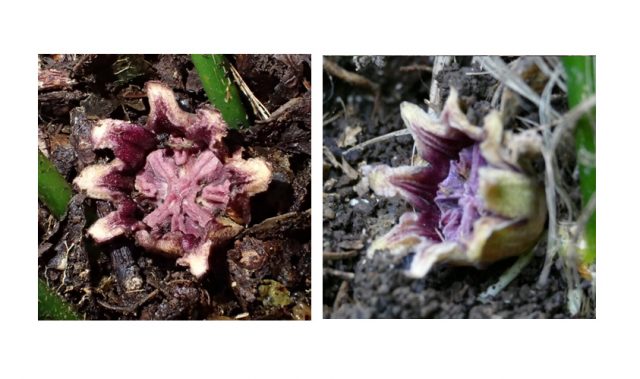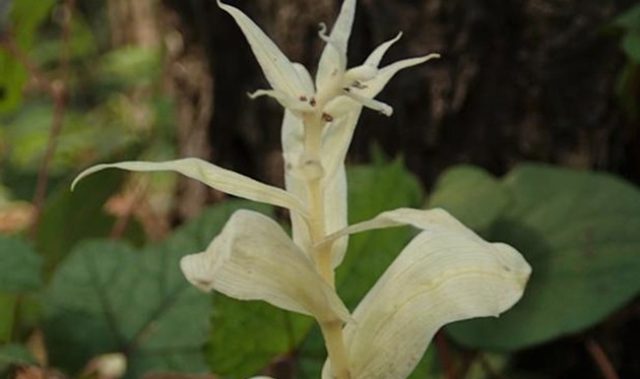
AsianScientist (Nov. 9, 2016) – A new ‘cheater’ species of orchid in Japan has been found to live off nutrients obtained via a special kind of symbiosis with fungi. The study by Kobe University scientists was published in PhytoKeys.
Plants usually produce their own nutrients by using energy from the sun, but not all of them do. As a mycoheterotrophic plant, the new orchid species, named Lecanorchis tabugawaensis, gets nutrients by parasitizing upon fungi rather than using photosynthesis. This bizarre, symbiotic plant-fungi relationship is considered a kind of a cheating relationship, and these plants are sometimes informally referred to as ‘mycorrhizal cheaters.’
Having long attracted the curiosity of botanists and mycologists, a common feature of most mycoheterotrophic plants is their extreme scarcity and small size. In addition, most species hide in the dark understory of forests, only to be discovered during the flowering and fruiting period when aboveground organs appear through the leaf litter. Such plants are highly dependent on the activities of both the fungi and the trees that sustain them, making them particularly sensitive to environmental destruction.
The new orchid species has been already assessed with an International Union for Conservation of Nature status: Critically Endangered. With a distribution restricted to only two locations along the Tabu and Onna Rivers, Yakushima Island, this fungus-eating cheater might need some conservation attention.
“Due to the sensitivity of mycoheterotrophic plants, it has long been suggested that their species richness provides a useful indicator of the overall floral diversity of forest habitats. A detailed record of the distribution of these vulnerable plants therefore provides crucial data for the conservation of primary forests,” explained lead author Dr. Kenji Suetsugu.
The article can be found at: Suetsugu & Fukunaga (2016) Lecanorchis Tabugawaensis (Orchidaceae, Vanilloideae), a New Mycoheterotrophic Plant from Yakushima Island, Japan.
———
Source: Pensoft Publishers; Photo: Yamashita Hiroaki.
Disclaimer: This article does not necessarily reflect the views of AsianScientist or its staff.












